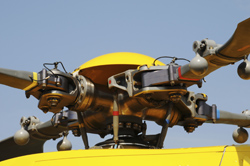Designing and testing of counter-rotating open rotors
Counter-rotating rotors are a new type of rotor that offers decreased carbon dioxide (CO2) output and improved fuel efficiency. To implement this technology, rigorous structural testing and modelling must take place. The EU-funded 'Structural design of a counter-rotating open rotor' (DECROR) project designed, tested and evaluated a carbon composite counter-rotating open rotor blade. This was done by a German company with experience in aerodynamics and structural mechanics testing. A first goal was the design and construction of a wind tunnel model of the carbon composite rotor blade. This model was rigorously tested for strength, excessive vibrations and deformation under pressure. The data gathered were then used for the construction of full-scale rotor blades. Three full-sized blades were designed with a view to reducing weight. The blades were tested for strength, fatigue, elasticity under flight conditions and overall stability. Project efforts have resulted in new modelling and design resources, as well as expertise, at the German company. They also contribute to the broader aims of the Clean Sky initiative, which endeavour to make aviation more sustainable. DECROR accomplishments have also laid the groundwork for further research.







